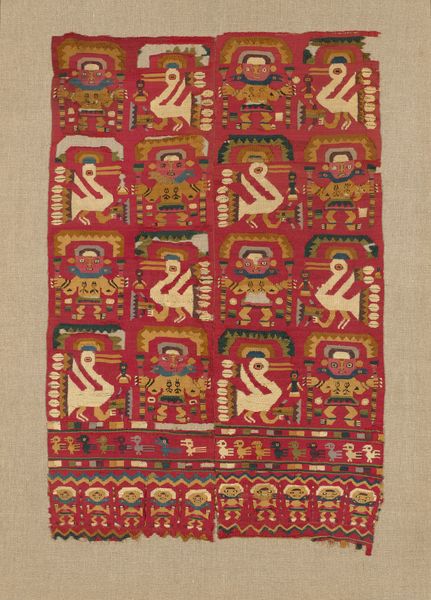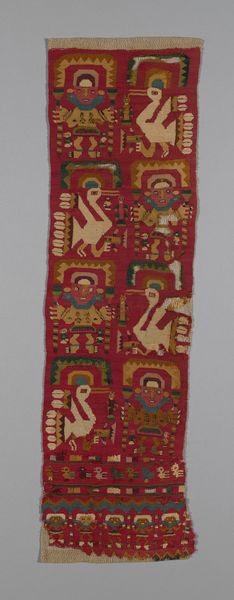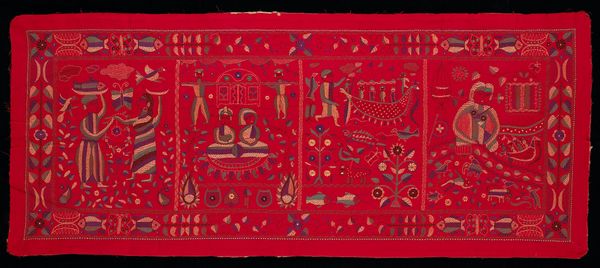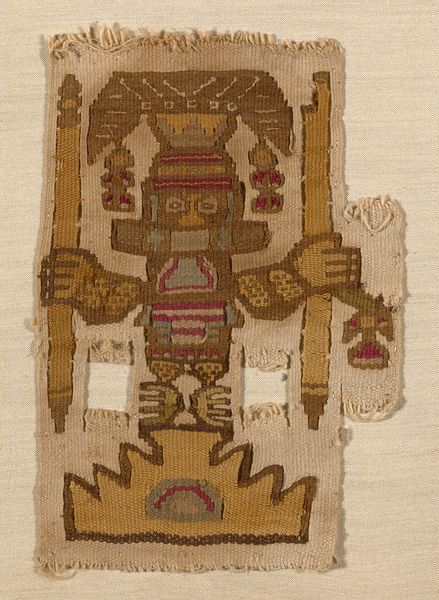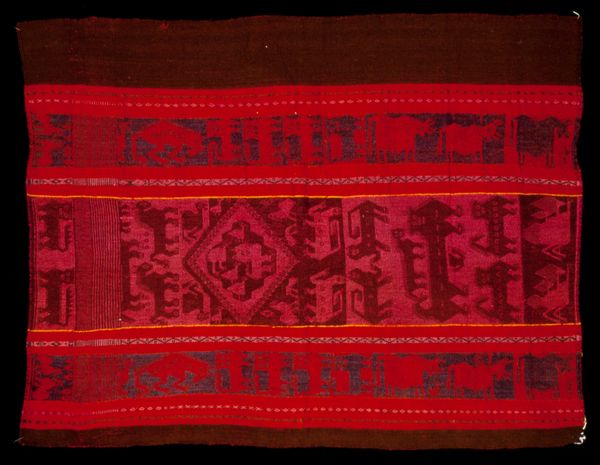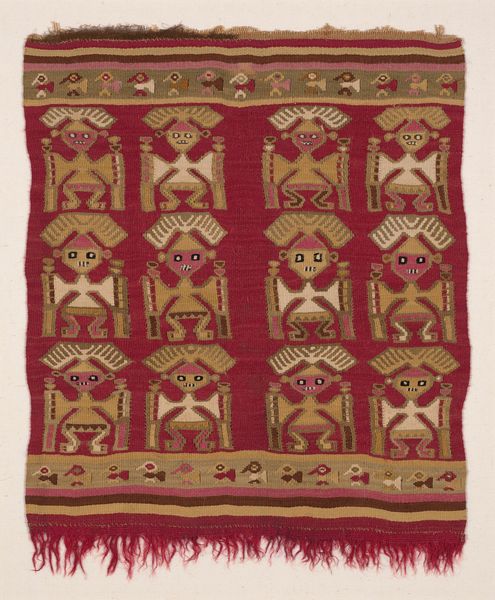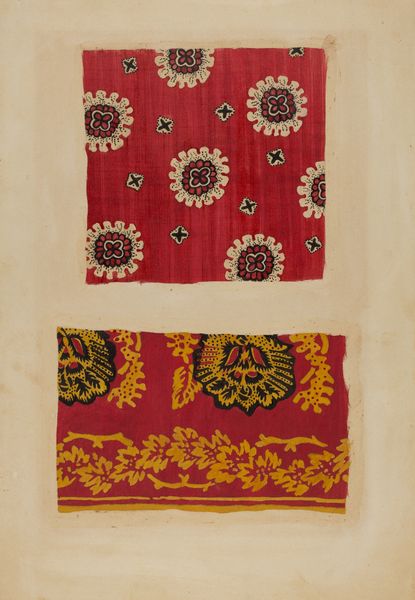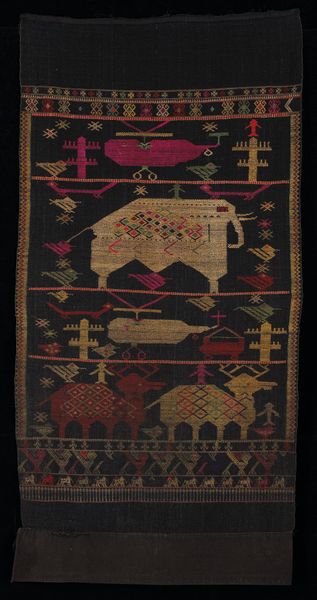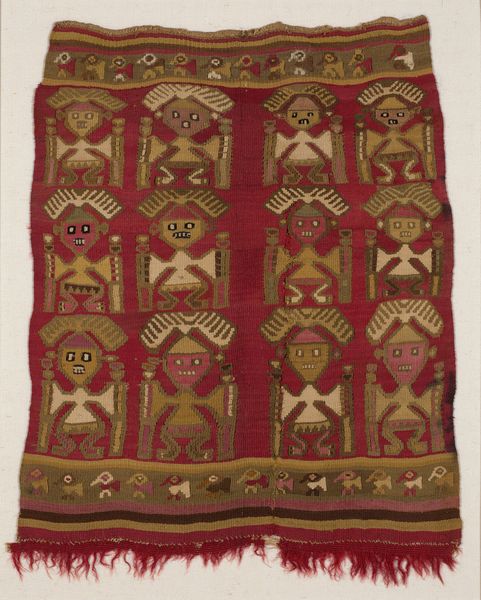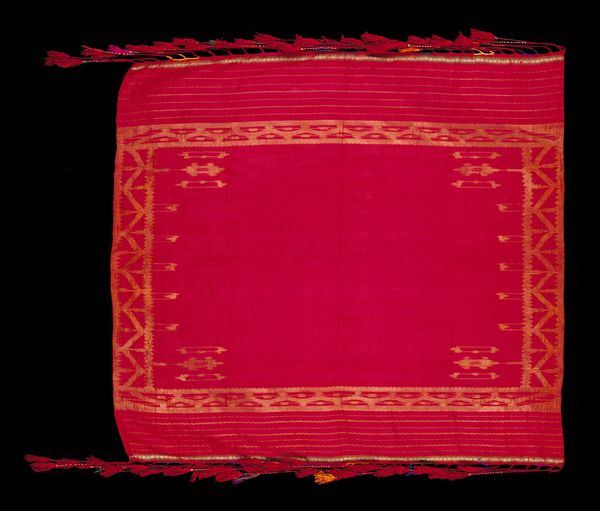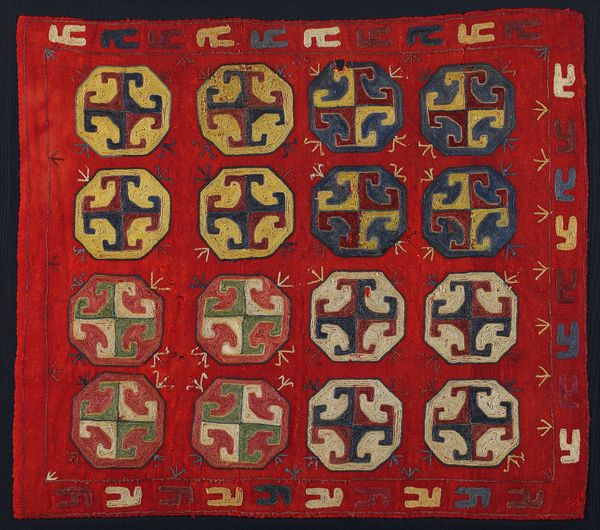
fibre-art, weaving, textile
#
fibre-art
#
weaving
#
textile
#
geometric
#
indigenous-americas
Dimensions: a: 26 × 50.8 cm (10 1/4 × 20 in.) b: 25.4 × 51.1 cm (10 × 20 1/8 in.)
Copyright: Public Domain
Editor: This textile is called "Border," and it was created by the Chancay culture, sometime between 1000 and 1476. I'm really drawn to the bold, repeating patterns, but it's making me wonder—how should we interpret the imagery in this weaving beyond its surface beauty? Curator: The striking geometric patterns and vibrant colors certainly catch the eye. However, the key here is understanding how textiles functioned within Chancay society. These weren't simply decorative. Think of them as a form of visual communication, interwoven with social, political, and spiritual meanings. Editor: So, the birds aren't just birds? Curator: Precisely! In many Indigenous Andean cultures, avian imagery holds powerful symbolism, often associated with the celestial realm and intermediaries between worlds. Consider the role of textiles in rituals and burials. Does the repetition suggest a cyclical concept? Editor: It’s fascinating to think about the weaving as a sort of language, encoding information about their worldview. The standardization of form might emphasize communal identity more than individual expression. Curator: Absolutely. And notice the interlocking, maze-like designs bordering the birds. This could represent pathways, both physical and spiritual, mirroring the complex social structures of the Chancay. The textile then becomes an active agent. Editor: It challenges this common binary we have in the West, thinking of something either as functional or aesthetic. Maybe for the Chancay, it's both at once. Curator: Exactly! Reflecting on its context urges us to see the agency embedded in the geometric order. It's a potent example of art and everyday life interwoven.
Comments
No comments
Be the first to comment and join the conversation on the ultimate creative platform.
